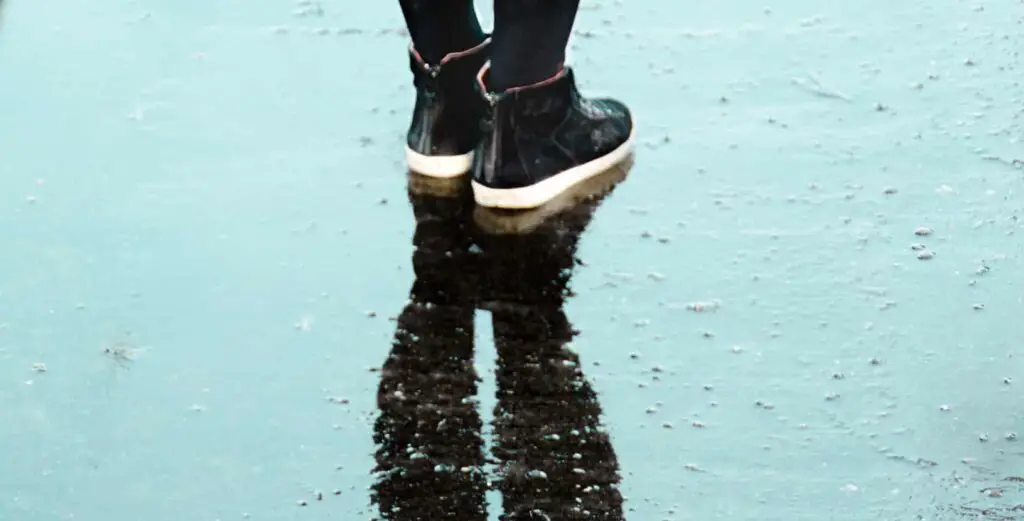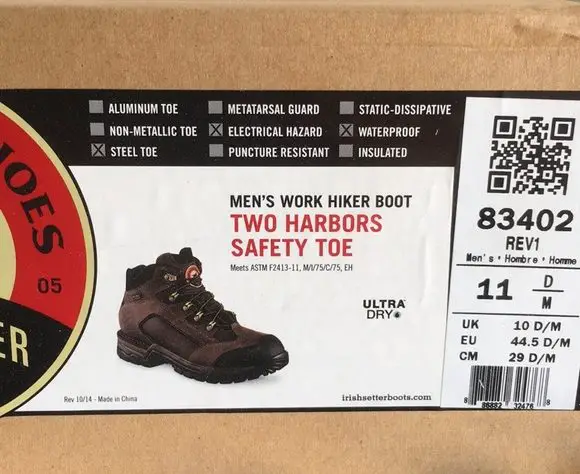Many a time, we as consumers may not know the difference between waterproof and water-resistant boots, and confuse them to be the same. It is not your fault; brands over the years have advertised it in the same league by using the terminologies interchangeably.
Let us first begin by learning the difference between the two terms.
Waterproof technically means impenetrable; hence, no amount of fluid can enter into an item if it is made of waterproof material.
Water-resistant, on the other hand, means it is capable of resisting fluid to enter an item to a certain degree.
Now that we know the difference between the two, we can move on to understanding about its use in boots. Both waterproof and water-resistant boots can be useful depending on a person’s need. The materials that are used for them vary, which is what differentiates them from one another.

Comparison Table between Waterproof and Water-Resistant Boots
| Features | Waterproof Boots | Water-Resistant Boots |
| Protection from water | Yes | Only to a certain degree |
| Materials | Rubber, neoprene, vinyl, nylon or polyurethane, gore-tex | Leather, nylon, and other synthetic materials; treated or coated with water repelling material |
| Good for | Outdoor activities like hiking, rough weather conditions, industrial workplaces | Daily use, suitable for light rain and snow |
| Weight | Mostly heavy | Lightweight |
| Breathable | No | Yes |
| Comfort | Yes | Yes |
| Cost | Priced higher than water-resistant boots | Priced lower than waterproof boots |
| Durability | Yes | Yes |
| Design | Does not have many styles or colors; tightly woven | Comes in several styles and colors; mesh and seams are incorporated |
What Materials are Used?
Materials like rubber, neoprene, vinyl, nylon or polyurethane are used in making waterproof boots, which does not allow any amount of liquid to flow in keeping the feet absolutely dry. A popular with a proven track record material is Gore-Tex that most manufacturers use for the lining of waterproof boots. It is a synthetic breathable fabric and is very lightweight.

Whereas, water-resistant boots are made with materials that are water repellents such as leather, nylon, and other synthetic materials.
Based on the materials used, the prices differ too; waterproof boots are more expensive compared to water-resistant boots.
What are Waterproof and Water-resistant Boots Good for?
While hiking or any other outdoor activities are fun to indulge in, it is also important to be wearing the right kind of gear. If you are someone who loves the outdoors, waterproof boots are a good investment, as they have longer durability, and can withstand rough weather conditions. Even if you submerge your entire feet in the water, it will keep you dry.
Water-resistant boots, on the other hand, are better to have for daily use, because they tend to be more comfortable and breathable, which makes it easier to go about your day.

In terms of design, water-resistant boots are more stylish, that go with almost any attire.However, waterproof boots look bulkier, make your feet sweat and you won’t always have too many options of colour or style. Although different brands are now successfully able to create and expand the limitation on this factor, so you don’t have to be disappointed just yet!
Are there any Criteria’s to meet During Production?
Industries and manufactures go through a rigorous process during production, as they need to meet a certain industry standard to label their boots in each category.
In technical terms, it is called an IP Rating Scale, which stands for Ingress Protection or International Protection. This scale starts with a rating of IPX-0 being the lowest, and IPX-8 being the highest. Depending on this, you can judge whether the boots are waterproof or not. The lower the rating, the lesser protection your feet get from water or any liquid seeping in through the boots.

The brand’s official website will have the ratings for each of their boots, in case you do not find them mentioned in the label.
Is it easy to Differentiate between the two?
Unfortunately, it is not an easy job differentiating between the two types of boots because with the growing number of brands across the globe, and they have found a back door to escape from the technicality of it all. Many manufacturers use a certain amount of coating on the material and pass them off as waterproof or water-resistant that can result in being neither of the two.
While scouting for that perfect pair depending on what you’re going to use them for, make sure to buy them from a trusted brand. You may have to shell out a little more than you expected, but it won’t go in vain.

Always check labels which are usually found inside the boots, as it will contain all the information about the material and IP rating. If it doesn’t show any rating, then you can safely assume that it doesn’t pass off as either waterproof or water-resistant.
The price is another factor that can be helpful, as most waterproof boots will be priced higher, considering the amount of work that goes into it during production.
Design of the boots can help you decide the right type of boots too. Waterproof boots will be woven more tightly with little to zero room for even air to pass through. Water-resistant boots will have noticeable seams on them which allow your feet to breathe.
Wrapping Up
To sum up, both waterproof and water-resistant boots are good to have, considering the level of activity and your requirement. Remember to note that while waterproof boots will not let any liquid penetrate through, it will also not allow any moisture to get out. Whichever one you decide to go for they need to be treated well, so you don’t have to say goodbye to them too soon. So choose your pair wisely and enjoy shopping!







